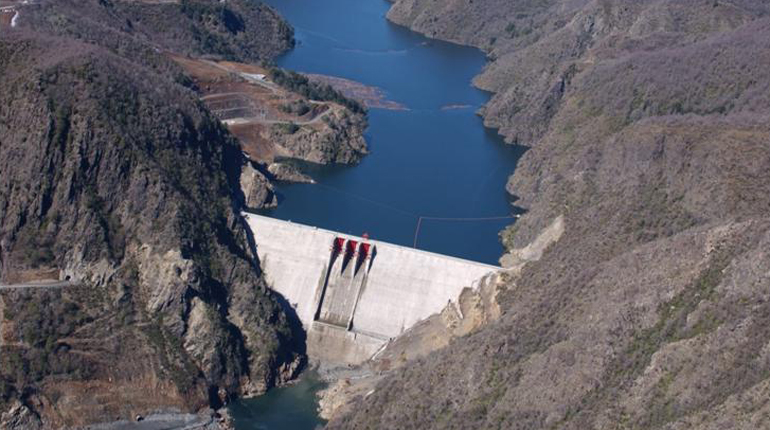Iran’s power sector offers challenging pickings
As power demand growth slows in the Middle East, private developers are looking to Iran as a potential frontier market, but several hurdles stand in their path.
 Mapna has a dominant position in Iran’s power sector. (Mapna Group)
Mapna has a dominant position in Iran’s power sector. (Mapna Group)
International power plant developers are keen to enter the Iranian market once sanctions are lifted on the country, but regulatory barriers and the government’s cash-strapped position will make this difficult to achieve.
Iran’s electricity demand has grown rapidly, prompting the Ministry of Energy to build up its installed generation capacity from 30 GW in 2004 to 74 GW in 2015 – an annual growth rate of 8-10%. Iran’s electricity reserve margin is just 7% in the summer months and demand is expected to continue to rise.
To meet its growing electricity needs, Iran plans to more than double its existing capacity. The programme includes 17 GW of combined-cycle gas turbine (CCGT) plants and 10 GW of conventional steam capacity.
Around 25 GW capacity is to be added by the private sector as independent power projects (IPPs). Iran currently has 10 GW of IPP capacity in service and another 3 GW under construction. The most ambitious component of Iran’s plan is its renewable energy scheme, which will comprise 4 GW of wind and 24 GW of solar capacity.
For private power developers operating in the region, the prospect of building IPPs in Iran is appealing. High-paced electricity demand growth in the Middle East created a strong market for private developers over the last decade. Now that the pace of growth is slowing, developers are keen to find a new market. But before international companies can bid to build any IPPs, Iran will need to allow foreign companies to take ownership stakes in build-own-operate projects.
This will require a change in the law and the development of a new framework similar to the recently launched Iran Petroleum Contracts, said Nigel Coulthard, president of Cercle Iran Économie, at the Post-Sanctions Iran conference in London last week.
Secondly, Iran will need to work out how it will pay for the new power plants and electricity contracts. Developing a large portion of the new capacity as IPPs will allow it to spread costs, but developers will need to be convinced they will be paid for power produced by their projects before they commit to investing. Iranian payments to suppliers have been patchy since 2010.
As part of its privatisation drive, and to raise government funds, Iran has sold stakes in its existing power plants to Iranian charitable trusts known as bonyads, Social Security Investment Co. (Shasta) and industrial group Mapna. It is likely to sell off more assets in the future. However, this could create problems for the operators of the projects, said Coulthard, because none of the buyers besides Mapna has experience in the power sector.
Mapna has a dominant position in Iran’s power sector and any new entrants to the market will need to compete effectively against the company. Mapna has evolved from an engineering, procurement and construction company into a huge industrial group, plant owner and turbine manufacturer.
Even so, Mapna’s technology is slightly less advanced than other turbine suppliers as it takes time to reverse-engineer components. Its Class E turbines operate at a maximum efficiency of 29.4% and it is yet to build Class F turbines, which are more efficient. Improving the efficiency of its turbines will help it compete with other companies in tendering for upcoming IPPs.
Mapna is trying to prepare for when sanctions are lifted by improving its technology. "The most important challenge for Mapna is to cooperate with supporting companies like Siemens and to upgrade its machines," a Mapna representative told Interfax.
Budget constraints
In 2010 the government indicated that gas may be provided to IPPs free of charge. If this is the case for the new projects, efficiency will be a lesser priority. However, on the financing side, Mapna faces similar budgetary constraints to the state and its capacity is therefore restricted.
While Iran may be able to attract private power developers to build its gas-fired capacity, it is likely to struggle to draw interest in its steam power plant tenders. This is a problem, said Coulthard, because Iran needs steam-powered electricity to provide its baseload capacity.
Ultimately, developers aiming to participate in Iran’s power sector will face many hurdles. But the Ministry of Energy is "very competent", said Coulthard, and this will work in their favour. If the Iranian power market is viable for foreign companies, the scale of the country’s needs could make the venture highly lucrative.
Liked this article?
Sign up for exclusive, accurate and up-to-date natural gas news, analysis and intelligence, with global coverage of every phase of the gas chain.
By logging in or signing up for a free trial, you are agreeing to our terms and conditions, privacy policy and cookie policy.






